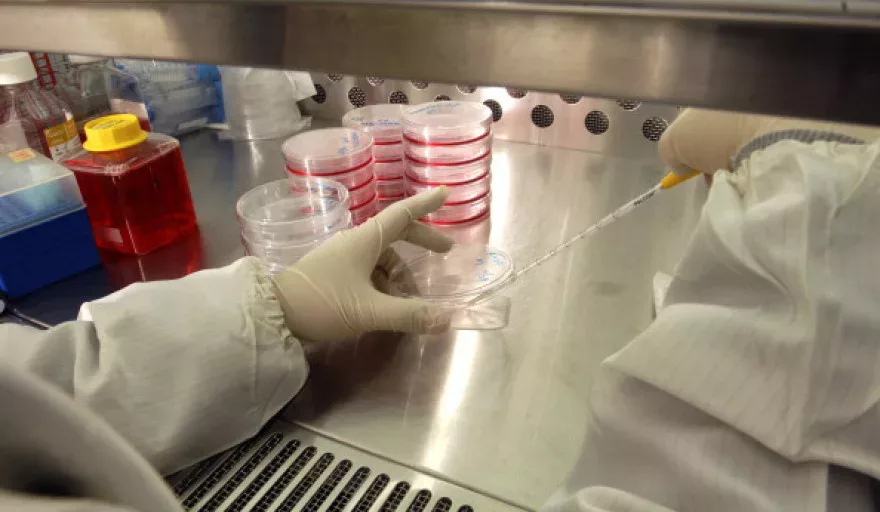EU-funded researchers are seeking to determine how stem cells derived from adult fat tissue can activate the regeneration of cartilage. If successful, their work could lead to effective new treatments for millions of osteoarthritis sufferers.
Osteoarthritis is a disease that affects over than 70 million EU citizens. It is the most common form of human arthritis and is characterised by the degeneration of cartilage in joints, which can become very painful. In addition to the human suffering, the societal costs are also significant in terms of medical and surgical care and hospitalisation.
Researchers under the EU-funded ADIPOA ADIPOA project are working to better understand a new treatment for osteoarthritis based on stem cell therapy.
“At present, there is no effective therapy on the market for preventing the progression of osteoarthritis,” says project coordinator Christian Jorgensen of Montpellier University Hospital. “Most treatments are focused on pain reduction and overall patient functioning.”
He adds: “There are 30 million Europeans that suffer from a severe form of osteoarthritis and for whom there are no disease-modifying treatments at all. This is a major health and societal problem. We hope our approach will ultimately lead to wide-scale delivery of real and effective new treatments for all osteoarthritis patients.”
The ADIPOA research team is seeking to determine how adipose-derived stem cells injected into diseased joints can activate the regeneration of cartilage. In recent years, these cells have emerged as a good alternative to bone marrow-derived stem cells. For one thing, adipose tissue, or body fat, is easily available through minimally invasive surgical procedures. Secondly, fat is available in large quantities allowing doctors to harvest a lot of stem cells at one time.
Members of the ADIPOA consortium have previously shown that injections of these cells can help to combat osteoarthritis, but the specific mechanisms of this effect have, until now, remained a mystery.
“At this stage of the project,” says Jorgensen, “we have been able to describe mechanisms of action of this effect through in vitro and in vivo experiments. Safety, efficacy and biodistribution of adipose stem cells have been assessed on animal models, using rabbits and goats.”
Jorgensen says the project’s initial results support the feasibility and safety of using human adipose stem cells in the treatment of rheumatic diseases that affect joints. The next step is clinical trials on humans, which started in April 2012. The results of these studies are expected to be published in 2014.
The right team for the job
The ADIPOA consortium is made up of 10 academic and two small business participants and gathers researchers and clinicians with expertise in clinical research, cartilage cell and adipose stem cell biology, and regenerative medicine. The project, says Jorgensen, favours interaction between different domains of activity.
“One of the key aims of the project is to achieve technological transfer,” he says, “from experimental research in laboratories to the private sector, to facilitate the development and marketing of new therapies.”
PROJECT DETAILS
- Project acronym: ADIPOA
- Participants: France (Coordinator), Italy, Germany, Israel, Lithuania, Ireland, Netherlands
- Duration: January 2010 – June 2014


















